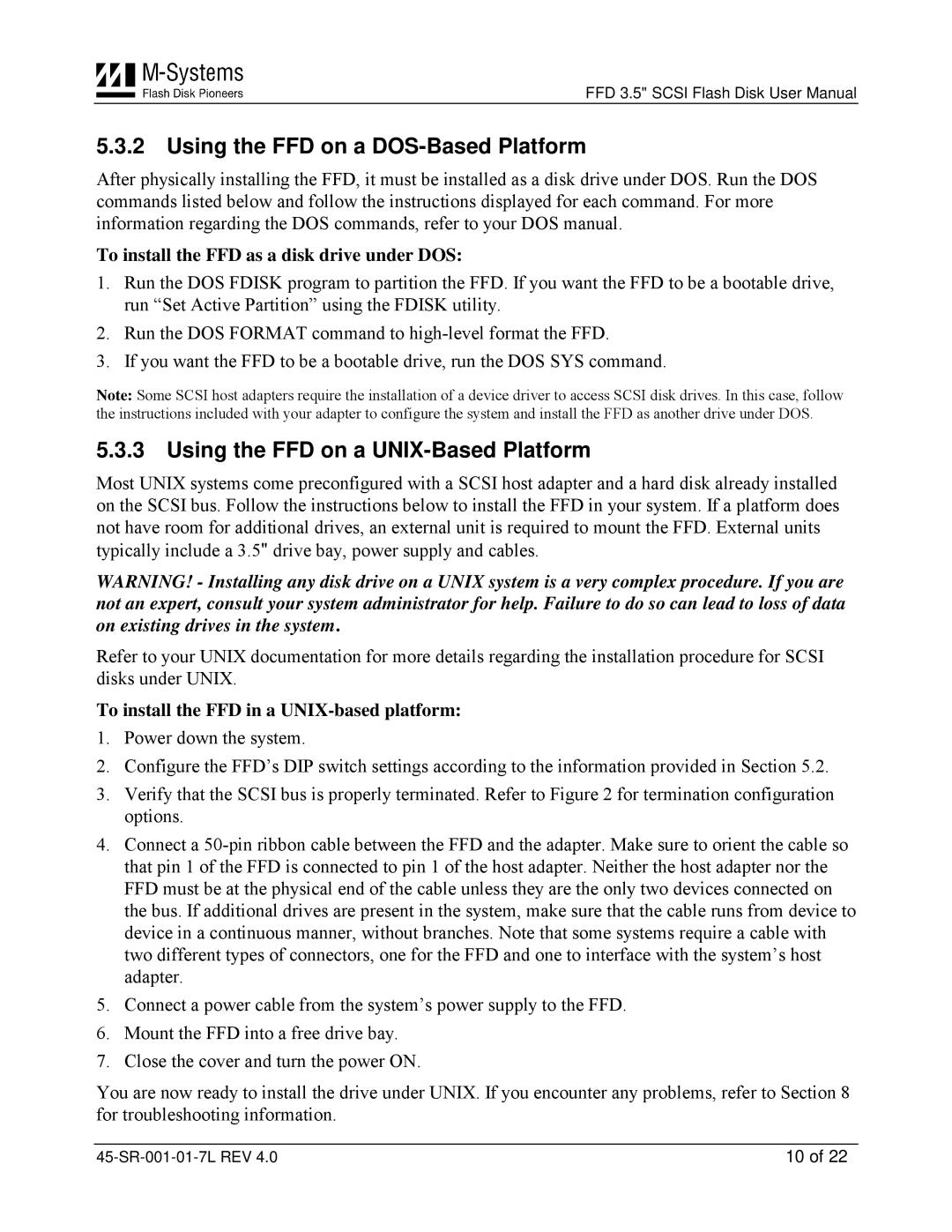
FFD 3.5" SCSI Flash Disk User Manual
5.3.2 Using the FFD on a DOS-Based Platform
After physically installing the FFD, it must be installed as a disk drive under DOS. Run the DOS commands listed below and follow the instructions displayed for each command. For more information regarding the DOS commands, refer to your DOS manual.
To install the FFD as a disk drive under DOS:
1.Run the DOS FDISK program to partition the FFD. If you want the FFD to be a bootable drive, run “Set Active Partition” using the FDISK utility.
2.Run the DOS FORMAT command to
3.If you want the FFD to be a bootable drive, run the DOS SYS command.
Note: Some SCSI host adapters require the installation of a device driver to access SCSI disk drives. In this case, follow the instructions included with your adapter to configure the system and install the FFD as another drive under DOS.
5.3.3 Using the FFD on a UNIX-Based Platform
Most UNIX systems come preconfigured with a SCSI host adapter and a hard disk already installed on the SCSI bus. Follow the instructions below to install the FFD in your system. If a platform does not have room for additional drives, an external unit is required to mount the FFD. External units typically include a 3.5" drive bay, power supply and cables.
WARNING! - Installing any disk drive on a UNIX system is a very complex procedure. If you are not an expert, consult your system administrator for help. Failure to do so can lead to loss of data on existing drives in the system.
Refer to your UNIX documentation for more details regarding the installation procedure for SCSI disks under UNIX.
To install the FFD in a UNIX-based platform:
1.Power down the system.
2.Configure the FFD’s DIP switch settings according to the information provided in Section 5.2.
3.Verify that the SCSI bus is properly terminated. Refer to Figure 2 for termination configuration options.
4.Connect a
5.Connect a power cable from the system’s power supply to the FFD.
6.Mount the FFD into a free drive bay.
7.Close the cover and turn the power ON.
You are now ready to install the drive under UNIX. If you encounter any problems, refer to Section 8 for troubleshooting information.
10 of 22 |
